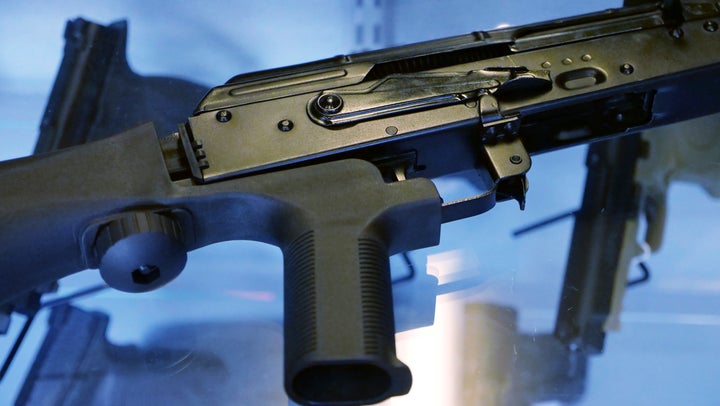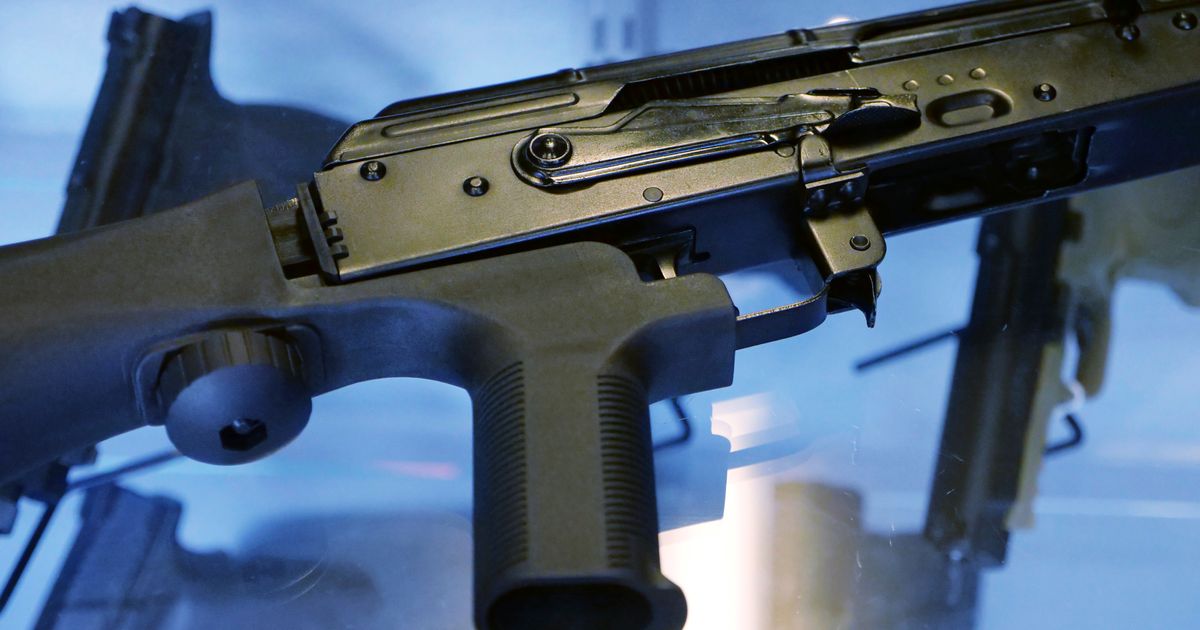The U.S. Supreme Court will hear oral arguments Wednesday in a case that promises to settle the question of whether civilians can freely buy bump stocks, which allow shooters to fire off hundreds of rounds per minute.
Though Garland v. Cargill does not raise Second Amendment arguments, the case promises to offer a window into the conservative-tilted high court’s thinking on firearms after it issued a sweeping expansion of gun rights two years ago.
The bump stock case, brought by gun store owner and firearms instructor Mike Cargill in Austin, Texas, challenges a Trump administration rewrite of federal regulations that banned the device after it played a key role in the 2017 mass shooting at the Route 91 Harvest Music Fest in Las Vegas. With 60 deaths and more than 850 injuries, the Vegas massacre is the deadliest mass shooting by a single gunman in U.S. history.
The case centers on whether the Bureau of Alcohol, Tobacco, Firearms and Explosives (ATF) overstepped its authority when it issued a rule banning bump stocks.
Bump stocks slide back and forth, allowing the shooter to harness the power of a rifle’s recoil to fire faster. By pushing forward with the non-shooting hand and backward with the shooting hand, the shooter can force the trigger into their finger, allowing them to shoot more rapidly than when using the finger’s muscle alone.
The ATF had ruled since 2006 that springless bump stocks were legal. After the Vegas shooting, the Trump administration directed the bureau to revisit that classification. In 2019, the ATF reclassified bump stocks as modifications amounting to machine guns, which have been largely criminalized since the National Firearms Act of 1934.

Rich Bowmer/Associated Press
Cargill surrendered two legally purchased bump stocks after the ATF changed its definition.
The complaint filed on his behalf contends that only Congress had the right to criminalize bump stocks, noting that the change threatened to turn owners of the estimated 520,000 legally sold bump stocks into felons.
Several bills attempting to ban bump stocks failed in the wake of the Las Vegas shooting.
“Rather than allow the democratic process to function as it is constitutionally required, the ATF and the Attorney General issued the Final Rule without input from Congress,” Cargill’s complaint says. “Even if Congress wanted to divest itself of that authority, it could not do so because defining crimes is an essential legislative function reserved exclusively for Congress.”
The case hinges largely on semantics.
Federal law defines a “machine gun” as a firearm that can shoot “automatically more than one shot, without manual reloading, by a single function of the trigger.” The Gun Control Act of 1968 included devices to modify guns into machine guns as part of that definition.
Those challenging the criminalization of bump stocks contend that the mechanism doesn’t amount to automatic fire because the trigger itself doesn’t mechanically reset between shots; the shooter’s finger still has to hit the trigger.
The Biden administration and gun safety groups, on the other hand, contend that the first trigger pull sets off a sequence of shots that amounts to automatic fire, since the following rounds depend on the first trigger pull.
“The bump stock rule is simply common sense,” Billy Clark, an attorney with Giffords Law Center to Prevent Gun Violence, said on a call with reporters ahead of the hearing. “Bump stocks turn semi-automatic weapons into machine guns. That is their sole purpose.”
The ruling in Cargill’s favor by the U.S. Court of Appeals for the 5th Circuit described the federal definition of “machine gun” as ambiguous.
So far the 5th Circuit is the only one that has ruled in favor of challenges to the ATF’s bump stock ban. Similar challenges failed in three other federal appeals courts. The Supreme Court declined to hear appeals in those cases.
The case, Merrick B. Garland, Attorney General, et al. v. Michael Cargill, could also have broader implications for an administration that, facing congressional gridlock, has leaned on the ATF’s rulemaking abilities to ban unregulated and untraceable ghost guns and is reportedly considering using its authority to sharply limit private gun sales.
Garland v. Cargill will mark the second time that the Supreme Court has heard a gun case since its sweeping reinterpretation of the Second Amendment in New York State Rifle & Pistol Association v. Bruen in 2022. That ruling, penned by Justice Clarence Thomas, said that for a law restricting gun rights to be constitutional, it had to stem from a tradition of regulation dating back to some time between the passage of the BIll of Rights in 1791 and the end of the Civil War.
That ruling set off a series of challenges to longstanding gun restrictions that are still being litigated.
Last year, the Supreme Court heard USA v. Rahimi, which raises the question of whether the Second Amendment protects the gun rights of those who have been found by civil courts to be domestic abusers. The court has yet to issue a ruling in that case.

